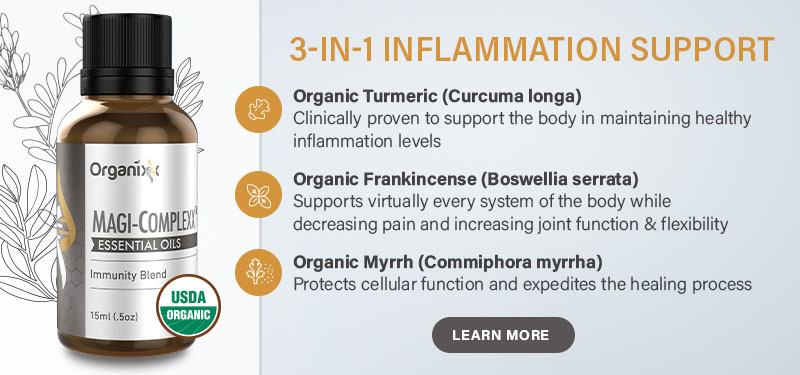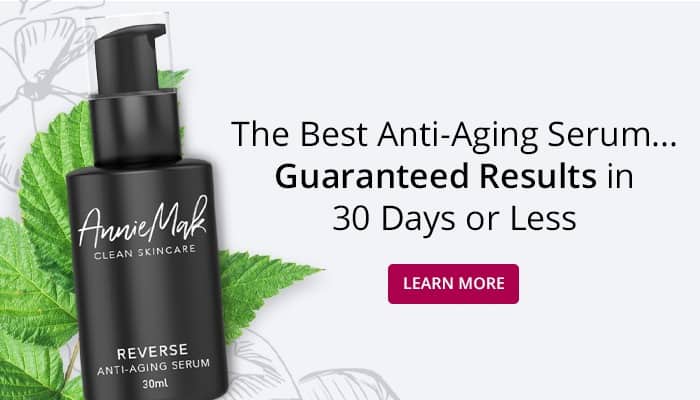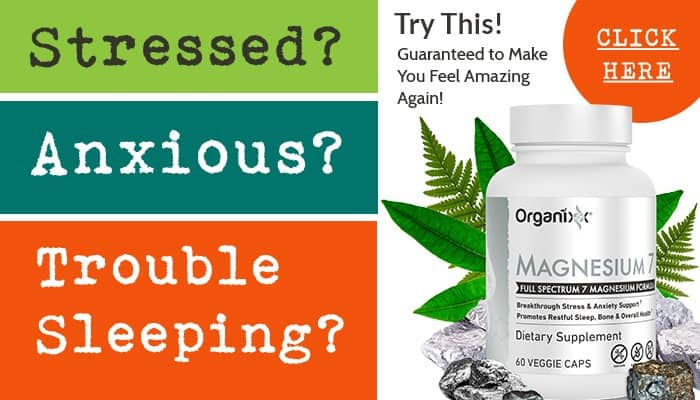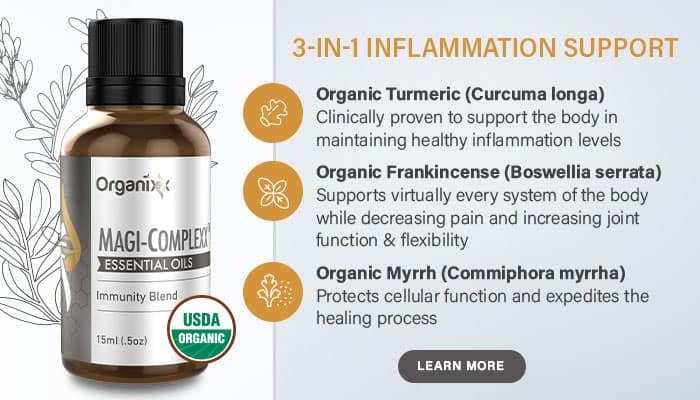Of the countless natural substances that can nourish and revitalize the skin, argan oil is one standout that has stood the test of time. Now science has combined the healing power of argan with the revitalizing effects of plant stem cell technology. The resultant argan stem cells are a new and improved way to get glowing, beautiful, age-defying skin!
What Is Argan Oil?
Argan (Argania spinosa) is a tree native to Morocco that produces a sweet fruit. The fruit is not what argan oil cultivators are after, however. Their prize is the seed or nut found inside of the fruit.
Argan oil, which is made from this nut, is amazing for more than just the skin and hair. It can also be a pricey addition to gourmet menus since it’s edible and excellent for internal health. In fact, it has been used for millennia for inflammatory conditions [1].
The fruit of the argan tree is a real treat for local goats too. Why would we mention this? Read on to find out the surprising role that goats play in argan oil production.
How Is Argan Oil Made? (and What Do Goats Have to Do With it?)
In modern times there have, of course, been questionable processing mechanisms developed by manufacturers wanting to produce large amounts of the pricey oil at the expense of quality. Luckily, most nuts today are still collected and pressed by hand, as they have for thousands of years.
Although argan trees are not particularly large trees, the fruit often grows on high branches – too high for argan oil makers (who are mostly women) to collect easily. This is where the goats come in.

Goats are very nimble and able to climb up the trees. They eat the fruit and “expel” the seeds. Then the women come by and simply collect the seeds.
Don’t worry, it’s not as bad as you may be thinking. According to a study conducted by researcher Ahmed El Aich of the Hassan II Agronomic and Veterinary Institute in Rabat, Morocco, approximately 60% of all argan oil pressed in that country comes from nuts that are spat out whole (not expelled at the other end, as is popularly believed) [2].
In addition, argan nuts are encased in a thick outer shell that keeps goat saliva (or anything else, for that matter) from contaminating them prior to being shelled.
As an interesting aside, while many people have tried to grow argan trees elsewhere, to this day the only place they grow is the southeastern part of this small, African country.
Since 1998, the argan forests of southwestern Morocco have been declared a biosphere reserve by UNESCO [3]. This is good news since the highest quality oil comes from small-batch producers who have cultivated and processed argan oil the same way for centuries.
Argan Oil Benefits for Skin
There are many reasons why argan oil in general can be so nourishing for both skin and hair. First of all, argan oil is rich in vitamin E. Its this vitamin E content which makes it such a great moisturizer for the face, soaking in and sealing moisture without leaving skin feeling greasy or waxy.
Argan Oil Offers Protection From the Harsh Rays of the Sun
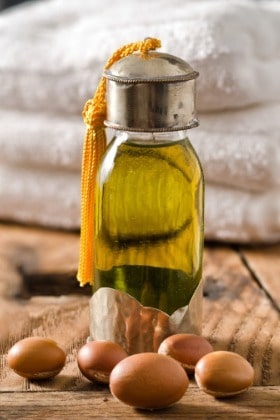
Vitamin E is also an antioxidant. It and other antioxidant substances, such as tocopherols, help make argan oil a substance that can protect skin from the most harmful rays of the sun. Moroccans, especially Moroccan women, have been using argan oil for centuries as a protectant against the brutal Saharan sun.
A 2013 study published in the journal Evidence-Based Complementary Alternative Medicine found that argan oil use led to a “dose-dependent decrease in melanin content.” This study found that argan oil protects against free radical damage and may also inhibit protein factors that are key in the growth of melanoma cancer cells [4].
Argan Is Rich in Essential Fatty Acids
Argan nuts are also rich in essential fatty acids, which is also good news for your skin. Research has confirmed that consuming healthy amounts of the “good” kinds of fats (or applying them topically) can help to reduce sun sensitivity and inflammatory responses associated with skin conditions such as acne.
Other investigations have shown that essential fatty acids can help with psoriasis. Of course, essential fatty acid intake has also been associated with internal health as well. They can help lower your risk of heart disease and stroke, alleviate pain associated with inflammation, and can help to balance neurological conditions [5].
The combined effects of all the skin-healthy substances in argan oil results in skin tissue that is more supple, yet at the same time stronger than ever. This is why argan helps with scarring and can hasten wound healing.
Another Moroccan study conducted in 2015 on postmenopausal women found that those who used argan oil externally had a significant increase in skin elasticity, compared with those who did not use argan oil [6].
Why Argan Plant Stem Cells Are an Even More Potent Form of Argan
In recent years, another form of argan has been discovered that takes the moisturizing, protecting, and nourishing components found in regular argan oil to the next level. This is known as argan sprout cell extract or argan stem cells.

What makes plant stem cells so beneficial for human health? To understand this, it’s helpful to discuss what a stem cell is first. Regular cells are “programmed” for one particular function, whether that is to create skin tissue or blood plasma.
Stem cells, however, are essentially “blank slates” and are designed to go wherever they’re needed most. They’re created “unprogrammed” and are sometimes called “source cells.” When they’re needed for new growth somewhere in the body, or in this case, in skin tissue, they simply “become” that type of cell, acting as a replacement for specific tissue cells.
How Do Plant Stem Cells Differ From Animal Stem Cells?
Both animals and plants create stem cells. There’s one big difference between them, however. The stem cells in animals naturally succumb to the aging process over time just like any other cell. In human skin, for example, this means that skin stem cells will become less effective as a person ages, and thus less able to support collagen production.
Plant stem cells, on the other hand, are exempt from the aging process. They will consistently contain the ability for self-renewal, even under less than ideal conditions or environmental stress.
Science is constantly discovering more about how important plant stem cells are for human health. The authors of a German study conducted at Heidelberg University explain:
“[I]t has gone almost unnoticed that plant stem cells represent the ultimate origin of much of the food we eat, the oxygen we breathe, as well the fuels we burn. Thus, plant stem cells may be ranked among the most important cells for human well-being [7].”
Some experts have found that plant stem cells can sometimes contain up to 1,000 times the beneficial effects (such as antioxidants) of regular plant extracts [8]. What’s even more incredible is what plant stem cells may be able to do for human skin cells.
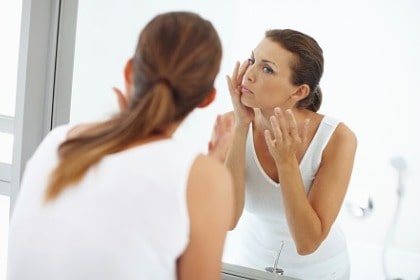
A report published in the SOFW Journal found that when small amounts of plant stem cells are used (in a skincare formula, for example), they can act like young human skin stem cells and are able to help increase collagen synthesis [9].
All this can translate into more photoprotection (protection from sun damage), more moisture retention, and less wrinkling and sagging for your skin.
Argan Stem Cells and Your Skin Health
Argan oil has been used for thousands of years amongst people in Morocco for skin protection and revitalization as well as for help with inflammation and for overall health. It has a proven track record throughout history.
Now research shows that argan stem cells are able to penetrate past the dermis level of the skin to provide protection and support at deeper levels than many other plant-derived stem cell types [10].
Organixx Skin: Reverse Anti-Aging Serum contains argan stem cells that work at deep levels for optimum protection and support. Argan stem cells within Reverse also work synergistically with other key ingredients such as raspberry seed, cranberry seed, and tremella mushroom extract to protect, nourish, fortify, and replenish the skin.
Reverse Anti-Aging Serum penetrates beyond the skin’s surface and works at a cellular level to keep skin hydrated and radiant while minimizing wrinkle depth and appearance.
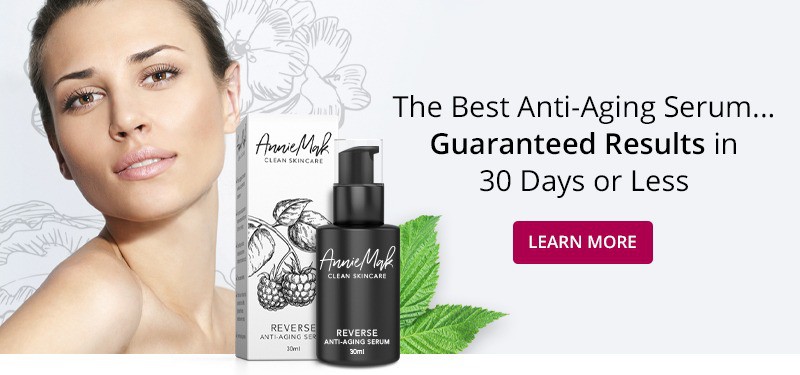
If you’re of a certain age, you’re likely already familiar with the fact that one of the first outward signs of aging occurs on the skin. Although we can’t reverse the aging process completely, we can put a serious dent in the skin wrinkling, sagging, and blotchiness that comes with getting older. One way to do so safely is with the polysaccharide power of Tremella fuciformis, an edible white, jelly-like mushroom also commonly known as silver ear, snow fungus, and the “beauty mushroom.”
Tremella Fuciformis Health Benefits for Both Inside & Out
You may already be familiar with the health benefits of many different kinds of medicinal mushrooms (fungi) and may even use some of them yourself. If you do, then you know how amazing mushrooms can be for energy, the immune system, for brain health, and so much more.
Of course, all the goodness that mushrooms provide you on the inside of your body absolutely makes a difference in how you look on the outside as well. Mushrooms can help with three functions vital for healthy, vibrant looking skin:
- metabolism
- nutrient absorption
- collagen production
When a person is healthy overall, it most definitely shows on the outside. On the other hand, much medical literature has made the connection between poor health in general and skin conditions such as acne [1], drab, dull-looking skin, splotches, rashes, and more.
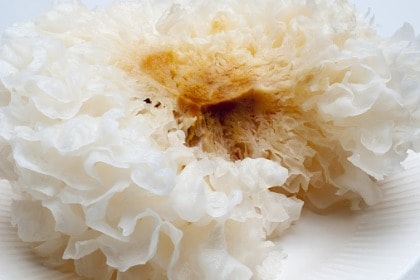
The anti-viral, infection-fighting nature of most medicinal mushrooms helps your skin in many indirect ways. Shiitake, turkey tail, and maitake mushrooms, for instance, all possess anti-inflammatory properties and also contain powerful antioxidants and key nutrients such as essential fatty acids and vitamin D [2].
But some medicinal mushrooms have components within them that seem to be specifically designed to benefit the skin. One of the best-known medicinal mushrooms that can help in this regard is Tremella fuciformis.
A Brief History of Tremella Fuciformis in Skincare
There are several substances inside tremella mushrooms that lend to its nickname as the “beauty mushroom.” It’s also called “silver ear mushroom” or “snow mushroom” or “white snow mushroom” because of its creamy white color and spongy shape.
In fact, tremella has been included in beautifying tonics and lotions for centuries. One of the reportedly “most beautiful women in Chinese history” was Yang Guifei, who lived in the 8th century during the Tang Dynasty. She was said to have attributed her glowing complexion to her use of Tremella fuciformis [3].
So what makes this gelatinous fungi so special when it comes to age-reversing and skin revitalization? Let’s zoom in a little closer to look at what modern science has to say about white snow fungus benefits.
Tremella Fuciformis Polysaccharides
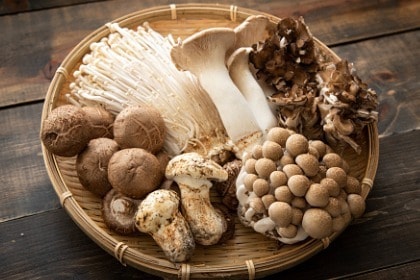
Polysaccharides are large molecules that are made up of many smaller sugar molecules. They are found in dozens of foods, especially carbohydrate-heavy grains and tubers as well as fungi.
There is a multitude of kinds of polysaccharide groupings that exist in nature. Many of them are particularly beneficial for different aspects of human health. The polysaccharides found in the silver ear mushroom, for instance, are perfectly suited for skin health.
Other Tremella Fuciformis Mushroom Benefits Include Antioxidants
First of all, the polysaccharides in tremella contain strong antioxidant properties. Antioxidant substances can protect the skin from oxidative stress of all kinds, including from the sun.
Polysaccharides in Tremella fuciformis can also be the catalysts for enzymatic reactions which reduce free radical damage. Some of the scavenging properties of both fungi-generated polysaccharides and the enzymatic reactions they influence are so powerful they’ve been shown in animal studies to inhibit cancer tumor growth!
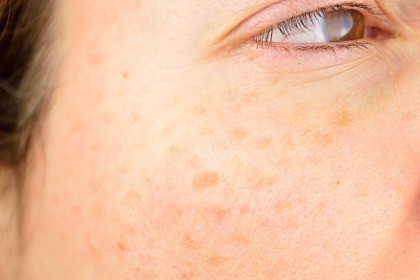
The antioxidant properties in white snow fungus can also help protect against and repair damage caused by harmful UV rays. A 2014 study published in the journal Food Science took a look at the polysaccharides within Tremella fuciformis and how they were able to reduce the effects of sun-induced aging on the skin.
Researchers found that Tremella polysaccharides high in uronic acid helped to minimize collagen loss that was specifically caused by UV radiation. They also found that these polysaccharides rehydrated sun-damaged skin and worked towards repairing “skin structure alternations” caused by photodamage [5].
What Is Uronic Acid?
Uronic acid is a sugar substance that plays a vital role in efficient metabolism. Another antioxidant component found in snow fungus polysaccharides is mannose.
Mannose is also a sugar which is often taken as a stand-alone supplement (in the form of D-mannose) for urinary tract infections (UTIs) and metabolic disorders [6].
Snow Fungus Benefits for Skin: Hydration Similar to Hyaluronic Acid
Another Tremella fuciformis polysaccharide benefit has to do with the way the polysaccharides keep moisture in, helping your skin stay hydrated.
Tremella polysaccharides hydrate by pulling moisture from outside into the skin. This is why some experts say that this white snow fungus acts much like hyaluronic acid. Hyaluronic acid is a lubricating substance that our bodies produce naturally.
Hyaluronic acid is clear and jelly-like and is found in large amounts in the skin, eyes, and connective tissue. Its job is to maintain water in these areas and keep tissues well lubricated by evenly distributing moisture.
Of course, just like collagen, endogenously (internally) produced hyaluronic acid declines as we age, which is why there are so many hyaluronic acid products on the market right now. What most people don’t realize is that these are synthetic substances, usually made in the laboratory from bacteria or through extraction from rooster combs (the fleshy red skin on a rooster’s head).
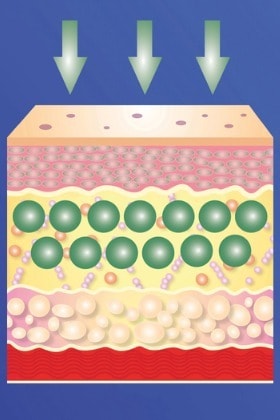
Man-made “replicas” of substances that our bodies naturally produce often tend to come with some sort of negative side effect. Snow fungus mushroom, on the other hand, is a 100% natural substance that can do the same thing as synthetic hyaluronic acid.
Some experts state that the jelly-like silver ear mushroom may work even better than synthetically created hyaluronic acid, as dermatologist Dendy Engelman explained in a 2018 article for Allure Magazine about Tremella fuciformis [7]. “The particles are smaller than hyaluronic acid so it penetrates the skin more easily,” says Dr. Engelman.
While hyaluronic acid can hold up to a thousand times its weight in water, the amazing white snow fungus may be able to hold just as much or more.
Inflammatory Properties of Silver Ear Mushroom
Many kinds of polysaccharides found in Tremella fuciformis also act as anti-inflammatories. A 2014 study found that the phenolic and flavonoid content of tremella mushroom made it a powerful antioxidant on a number of fronts [8].
This is beneficial for your skin because inflammation is at the heart of many serious inflammatory skin conditions such as eczema and psoriasis.
Immune-Boosting Polysaccharides in Tremella
There are also substances in white snow fungus that help to boost the immune system. An important one in this regard is beta-glucans.
Beta-glucans are a type of polysaccharide fiber found in the cell walls of grains and tubers as well as many kinds of fungi. They are immune stimulants which can increase natural killer (NK) cell production and macrophage counts. NK cells are a type of white blood cells that are super important for warding off pathogens – including cancer cells.

Beta-glucans are also great for your heart. As mentioned earlier, when you have a strong immune system, metabolism, and circulation system, this state will naturally rub off on your largest detoxifying organ (i.e., your skin) as well [9].
Research has also found that beta-glucans can help skin directly too. Tremella has long been known as a curative for scarring. Tremella fuciformis mushroom extract assists surface wounds in healing faster and can ease symptoms related to “erythema.”
Erythema is the painful reddening and irritation that often occurs right after a burn. The skin-healing benefits of tremella are due in large part to the presence of beta-glucans [10].
How to Take Advantage of Silver Ear Mushroom Skin Benefits
Whether you use tremella alone or in a formula, this “beauty mushroom” is definitely a natural substance that you should consider for your daily skincare routine.
In addition, if you’re looking for a clean, non-toxic and non-GMO skin formula that puts pure sourcing first and foremost, then we encourage you to check out AnnieMak’s Reverse Anti-Aging Serum.
Reverse not only contains organic Tremella fuciformis mushroom extract, but it also contains other powerful, skin-revitalizing substances such as argan sprout stem cell extract, raspberry seed extract, and more.
Remember that quality and purity really are key when it comes to anything that goes on your skin. You have done your best to eat naturally, go organic, and stay away from the toxins when it comes to the foods you prepare for yourself and your family. Why would you want anything less to go into what you “consume” through your skin?
Reverse Anti-Aging Serum penetrates beyond the skin’s surface and works at a cellular level to keep skin hydrated and radiant while minimizing wrinkle depth and appearance.

Seeds are powerful foods for the body, plain and simple. And when certain seeds are pressed for their oil and used on the skin, the results can be pretty amazing. Read on to learn more about two of the best seed oils for skin around – celery seed oil and flaxseed oil – which are used in an advanced skincare ingredient called PoreTect™.
What’s in a Good Seed Oil for Skin?
Seeds are plants that are still in the embryonic or “baby” stage. They are usually housed in a “casing” or covering. As such, they contain all the necessary ingredients needed to eventually develop into a full-grown plant. This means all the same phytonutrients, vitamins, and minerals of a plant packed into one tiny, “super-charged” unit!
Seeds are a wonderful source of fiber when ingested. When eaten whole, in a butter (like with sunflower seed oil), or when used topically, they contain a significant quantity of revitalizing, protecting, and repairing fats.
For healthy skin, these fats, as well as the antioxidants, terpenes, vitamins, minerals, and other nutrients, can all help to heal the toughest skin conditions.
Celery Seed Oil Protects Against Inflammation
One of the most powerful seed oils for skin is celery seed oil. Celery is related to parsley and fennel and can be extremely gut healing, and anti-bacterial [1]. Celery also contains dozens of minerals, such as magnesium, as well as key vitamins, such as vitamin K.
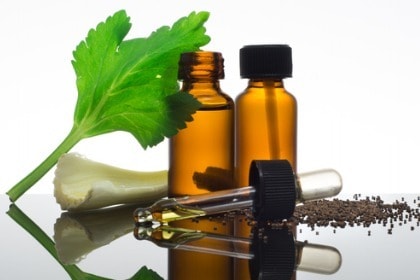
Celery is especially known for its strong anti-inflammatory properties.
The pectin-based polysaccharides in celery can calm digestive system inflammation. Researchers at King Saud University in Saudi Arabia discovered that certain flavonoids in celery can even protect against ulcers by reinforcing the digestive tract lining [2].
Along the same lines, celery seed oil can be beneficial for skin as an anti-inflammatory agent [3]. It’s used to fight red spots, puffiness, and blemishes. It can also be used to clear up discoloration and smooth out the complexion in general.
Used as a topical, it can prevent acne breakouts. Its antibacterial components can help to maintain deep cleaning and protection throughout the day. As an interesting aside, celery seed oil can also be used as a mild and safe insect repellant, according to a 2004 report in the Annals of Tropical Medicine [4].
Flaxseed Oil for Skin
Like celery, flaxseeds are nutritional powerhouses. Also known as linseeds, these tiny morsels have been cultivated and eaten for thousands of years. Flaxseeds are hormone-balancing and can help regulate blood sugar.
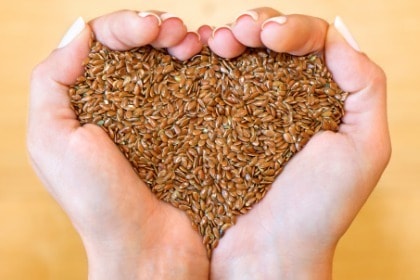
Fun fact about flaxseed: King Charlemagne of the Franks (now Germany) in the 8th century made it a law that all people in his kingdom were to eat flaxseeds. That was how much he was enamored by their nutritional goodness [5]!
Of course, we’re not going to “lay down the law” and order you to get your flax in every day. We will highly suggest it, however, especially when it comes to what flaxseed oil can do for your skin!
It’s a given that flaxseeds can help your body from the inside out. Perhaps the most important way is through what they can do to naturally increase collagen production for healthy tissue.
You may be aware that the key to youthful-looking skin is healthy collagen production in the dermis and other skin layers. Unfortunately, experts state that with each year we age after around 25, our collagen production will decrease significantly. This is especially true if we’re living a typical Western lifestyle and eating the standard American diet.
How the Omega-3 in Flaxseed Aids Collagen Production & Healthy Skin
Collagen is a simple yet important protein, made up of peptides (chains of amino acids). It’s used for the creation and repair of all types of tissue in the body, including joints, cartilage, and skin.
Omega-3 fatty acids, especially EPA, DHA, and ALA (linolenic acid), assist with collagen production in a variety of ways. Omega-3 is a powerful antioxidant, so it can help protect the skin from pollutants and sun overexposure. It’s also an anti-inflammatory [6].

In addition, there is some evidence to support the fact that omega-3s help collagen production directly. A 2010 investigation conducted by Stanford University and the University of South Dakota found that omega-3 fatty acids help to modulate collagen signaling in the blood [7].
So, what’s the key to healthy collagen production? In simple terms, it’s to give your body the nutrients it needs while creating an environment that’s conducive to maximum production.
Omega-3s are vital for your body in all ways, yet the body cannot make them. The most common foods that contain omega-3s are fatty fish such as mackerel, salmon, and tuna. They’re also found in extremely high amounts in (you guessed it) flaxseeds and flaxseed oil!
Using flaxseed oil on your skin can help give it what it needs for a healthy glow without ever feeling oily.
PoreTect™ by Sederma
PoreTect™ is a patented formula created by the French company Sederma. It joins together the best of the best in seed oils to provide you with maximum skin rejuvenation power.
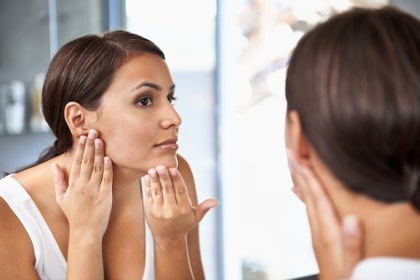
It combines the anti-inflammatory, soothing benefits of celery seed oil with the antioxidant, collagen-boosting power of flaxseed oil. Together, this combination brings “firmness, tone and density to the skin” while at the same time reinforcing and repairing its actual structure which keeps pores tight and prevents sagging [8].
The celery seed-flaxseed combo that PoreTect™ provides is really something special since it also strengthens cellular metabolism in the skin in general. The result is a “refined skin texture with a blurred and satin appearance.”
AnnieMak’s Reverse Anti-Aging Serum contains PoreTect™ and Juvinity™, two ground-breaking, patented formulas by Sederma, as well as Tremella fuciformis mushroom, cranberry seed oil, raspberry seed oil, and argan plant stem cells.
These substances work synergistically to create deep healing and revitalizing for all skin types. Packed full of all-natural and organic ingredients, Reverse can take aging skin to a new level of health and beauty.
Reverse Anti-Aging Serum penetrates beyond the skin’s surface and works at a cellular level to keep skin hydrated and radiant while minimizing wrinkle depth and appearance.

The American Institute of Stress estimates that nearly 80% of people nowadays regularly suffer physical symptoms of stress, which includes issues such as anxiety, chronic fatigue, and poor sleep [1]. But it just so happens that these same symptoms are also associated with a much more serious stress-induced syndrome known as adrenal fatigue that, if left to run its course, can be downright life-debilitating.
What Are the Adrenal Glands?
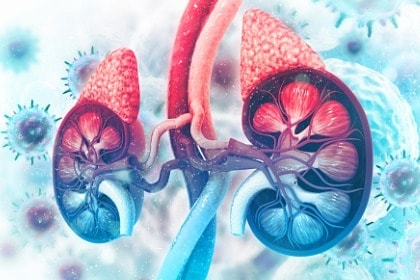
The adrenal glands are small glands (about the size of a large grape) that sit on top of your kidneys. They’re responsible for the production of many important hormones, one of the best-known being cortisol – oftentimes referred to as the “stress hormone.”
(As a side note, in women approaching menopause, the adrenal glands also take over production of sex hormones as the ovaries start slowing down.)
The adrenal glands are designed to function as a natural buffer for periodic stress, routinely adjusting hormone levels to maintain homeostasis (a state of balance) throughout the body.
What Is Adrenal Gland Fatigue?
The term “adrenal fatigue” is a bit misleading in that it doesn’t refer to the adrenal glands themselves wearing out. Rather, it’s a breakdown in how the adrenal glands communicate with the brain through a connection known as the hypothalamic-pituitary-adrenal (HPA) axis.
When the body is under prolonged or severe stress it can lead to a communication breakdown in the HPA axis leading to either adrenal overactivity or underactivity [2].
Is Adrenal Fatigue Real?

It’s also worth pointing out adrenal fatigue is somewhat controversial and is much more recognized in the alternative health realm than it is in allopathic (Western) medicine. As a result, official statistics on its prevalence remain somewhat elusive.
However, it’s well accepted in all types of medical practice that the heightening demands of modern-day life are causing average stress levels to go through the roof. This means it’s likely safe to surmise that adrenal fatigue is much more common than many people think – and you may even be suffering from it yourself.
But, how can you know for sure?
How to Test for Adrenal Fatigue: 6 At-Home Options
The good news is that there are a variety of simple but effective options for assessing your adrenal gland function from the comfort of your own home (though it’s always advisable to consult with a qualified physician or health practitioner if you think you’re currently suffering from a serious health condition).
The following six at-home health tests are useful tools for learning more about the health state of your body, specifically with regards to potential adrenal abnormalities.
#1 – Saliva Test
The so-called “gold standard” for testing adrenal function is to have your cortisol and DHEA (dehydroepiandrosterone) levels professionally evaluated using saliva samples that you collect throughout the course of an average day (usually at four separate intervals).
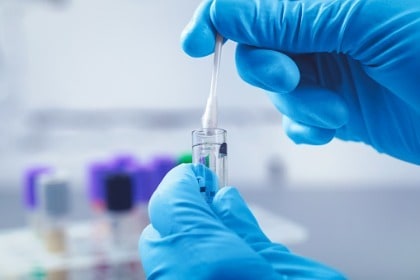
A qualified laboratory will be able to assess the varying levels of these two critical hormones in your body and determine whether your adrenal glands are functioning in a state of overactivity, under-activity, or balanced normalcy.
According to adrenal expert Dr. David Jockers, an Adrenal Saliva Test typically costs around $300 and is generally not covered by standard insurance policies. It’s still worth getting, though – just so long as the laboratory that interprets the results does so by evaluating all of the saliva samples in tandem with one another.
An accurate hormonal assessment simply can’t be done from one single saliva sample, as your collective hormonal rhythm is where the real answers are found concerning adrenal status.
Using a simple, at-home saliva testing kit like the one offered by ZRT Laboratory will allow you to collect saliva samples at your convenience and send them off to the company for a customized analysis.
What you’ll receive back from this type of adrenal fatigue test is a thorough analysis and hormonal “map” indicating the daily diurnal curve of your free cortisol levels relative to your DHEA levels. This can accurately indicate the functional status of your adrenal glands [3].
#2 – Blood Pressure
Since another primary function of the adrenal glands is to regulate blood pressure levels, testing your blood pressure levels at home can also help to give you an idea as to any potential adrenal abnormalities.

If your blood pressure levels are high, this could be a sign of adrenal hyperfunction or high stress hormones. Conversely, low blood pressure levels could indicate adrenal hypofunction, or a lack of stress hormones.
“A normal resting blood pressure should be in the range of 110-130 mm/Hg (millimeters of mercury) over 70-80 mm/Hg,” explains Dr. Jockers. “A resting blood pressure over 130/80 mm/Hg can be a sign of high adrenal output. A resting blood pressure under 110/70 mm/Hg may be a sign of low adrenal output.”
You can test your blood pressure levels at home using either a less-expensive aneroid monitor, which has a simple dial gauge that shows readings with a pointer; or a more-expensive digital monitor, which displays blood pressure levels on a digital display.
Johns Hopkins Medicine recommends avoiding coffee and cigarettes at least 30 minutes prior to taking your blood pressure for such purposes and urges at-home testers to use the bathroom first and remember to relax before performing this test [4].
#3 – Pupillary Constriction
Also known as an Iris Contraction Test, a Pupillary Constriction Test measures the contraction of the eyes’ irises in response to sudden exposure to bright light after a period of time in darkness.
First described by Dr. C.F. Arroyo back in 1924, a Pupillary Constriction Test assesses the functionality of the hypothalamic-pituitary-adrenal (HPA) axis, an interconnected system inside the body that manages stress levels via the adrenal glands.
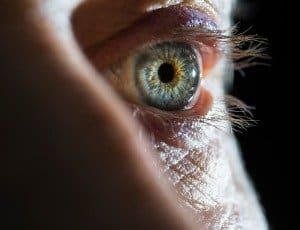
You can perform this simple adrenal fatigue test at home by sitting in front of a mirror in a dimly lit room for a few minutes before suddenly shining a flashlight in your eyes at a roughly 45-degree angle. As you do this, your irises will naturally constrict and decrease in size. The time it takes for this to occur, as well as the process by which it occurs, can tell you a whole lot about your adrenal function.
If your irises stay constricted (small/closed) for 20 seconds or longer in response to the light, your HPA axis is likely functioning up to par. If your irises experience fasciculation (twitching) for roughly 10-20 seconds, you could have mild HPA axis disruption.
If this fasciculation lasts for just 5-10 seconds, then you might have generalized HPA axis fatigue. And if there’s an immediate pulsation and dilation of your irises (they get big and then small) in response to the light, then you could have more severe HPA axis exhaustion or failure.
#4 – Orthostatic Hypotension
Similar to the Blood Pressure Test we already covered in #2, an Orthostatic Hypotension Test involves just the use of a blood pressure cuff. After lying down and resting for five minutes, take your blood pressure and write down the results. Then stand up and immediately take your blood pressure again, also writing down the results.
According to Dr. Jockers, your systolic pressure (the top number) should naturally rise about 10 mm/Hg when you shift from the lying to the standing position. If your systolic pressure remains at the same level or decreases, this could be a sign that your adrenals are fatigued and failing to naturally release epinephrine when you stand, which they would normally do to ensure that enough blood is pumping towards your heart.
“Your doctor will diagnose orthostatic hypotension if you have a drop of 20 millimeters of mercury (mm Hg) in your systolic blood pressure or a drop of 10 mm Hg in your diastolic blood pressure within two to five minutes of standing up, or if standing causes signs and symptoms,” explains the Mayo Clinic, which also recommends this test [5].
#5 – Sargent’s White Line Test
First developed by French endocrinologist Emile Sargent, Sargent’s White Line Test is a simple way to test for moderate-to-severe adrenal hypofunction at home [6]. It’s said to be about 40% effective in revealing the presence of adrenal fatigue and can be done at no cost using a pointy, but not sharp, object such as the dull end of a retracted ballpoint pen.

To perform this test effectively, first uncover your abdomen and expose it to natural light for 15 minutes. Then, take your pointy object and gently and lightly stroke a patch of skin back and forth, creating a roughly six-inch straight line. Be sure not to scratch or break the skin in the process.
Within a few seconds, a white line should appear that, not long after that, turns red in color – this being an indicator that your adrenal glands are healthy.
If the line stays white for several minutes, however, widening but never turning red, this could suggest the presence of adrenal gland fatigue. That’s because a lack of reddening typically suggests insufficient blood pressure levels in the body, which as with the Blood Pressure Test points to adrenal output being too low.
#6 – Rogoff’s Sign
Named after Dr. Steven Rogoff, the physician who first discovered it, Rogoff’s Sign is another simple, at-home test for evaluating adrenal function.
It’s pretty self-explanatory: if you experience unrelenting pain in the midsection of your back where your ribs are located – and it never really goes away like muscle pain would – this could be a sign of underlying adrenal fatigue [7].
What to Do With Your At-Home Adrenal Test Results?
The purpose of doing an adrenal fatigue test at home is not to turn you into your own doctor, but to help you keep an eye on your own health status. Please discuss any worrisome or inconsistent findings with your primary healthcare provider to determine what actions, if any, are recommended.
Maintaining Healthy Adrenals Through Diet & Lifestyle
Keep in mind that your overall adrenal health is dependent upon you maintaining a proper electrolyte balance within your body – particularly a balanced ratio of sodium and potassium.
Trace minerals, full-spectrum sea and earth salts, and mineral-rich foods – not to mention plenty of clean water and rest – are all necessary for keeping your adrenal glands fully charged, adequately hydrated, and ready to go at all times.
Some additional health & lifestyle approaches that can help to keep your adrenals fit as a fiddle include:
- supplementing with vitamins and other minerals such as magnesium [8]
- maintaining an anti-inflammatory diet
- avoiding caffeine and sugar
- skipping foods that trigger gut problems and sensitivities
- exposing your skin to natural sunlight
- exercising regularly
- using essential oils
- turning off your phone and other electronic devices at least one hour before winding down and going to sleep at night
Magnesium deficiency is linked to stress, diabetes, heart disease, osteoporosis, chronic fatigue syndrome, depression, anxiety, trouble sleeping, sore muscles, migraines, and many more debilitating health conditions.
If your body needs magnesium, you want the most beneficial kind your body can actually absorb. Organixx Magnesium 7 gives you seven (7) of the very best, most bioavailable types of elemental magnesium available.
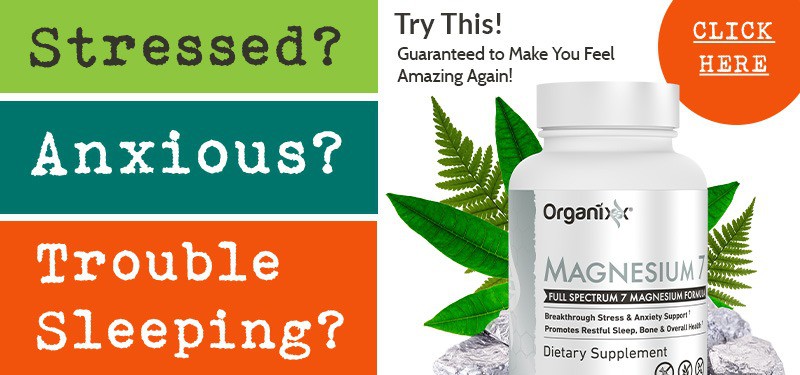
Blessed Thistle is a bitter herb that’s so versatile and can be beneficial for so many ailments, it has often been thought of as a “gift from God.” Perhaps that’s why the many other names it goes by all have a holy or saintly element to them: Holy Thistle, St. Benedict’s Thistle, Cardo santo, and Cnicus Benedictus.
What Is Blessed Thistle?
Blessed Thistle (not to be confused with its close cousin, Milk Thistle) is an annual flowering plant with leathery leaves and a thorny, weed-like appearance.
Blessed Thistle is part of the Asteraceae family, as are most thistle plants. This family is huge, comprising over 32,000 different varieties. Another name for this categorization is the “daisy” or “aster” family [1].
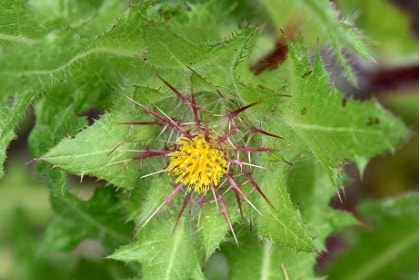
Blessed Thistle is native to the Mediterranean region of Western Europe and has been used medicinally there for centuries. Since the Middle Ages, it’s been touted as a general tonic for all-around health.
Cnicus benedictus is also what’s known as a “bitter” herb, and as such contains unique and deeply healing properties for humans. Just a few of its uses include:
- as a source of assistance for digestion and elimination
- as an antibacterial and anti-inflammatory
- as a good source of antioxidants, and
- as a detoxifier
Cnicus benedictus: The Benefits of a “Bitter” for Better Digestion
All foods have a certain taste; most of us are familiar with and even crave tastes such as sweet or salty. The bitter taste goes unnoticed and unappreciated by most palates, however. This is a shame because “bitters,” as they are often referred to, are among some of the most healing foods on the planet.
All bitter foods can aid the digestive process, and Blessed Thistle is no exception. In Ayurvedic medicine, bitter foods are thought to balance stomach acid and can work as natural diuretics and stimulants for bowel movements.
In Chinese medicine, bitters are thought to “cool down” the body, acting as a substance to help release the buildup of excess body fluids that can add heat. Chinese medicine practitioners also believe that bitters can strengthen the small intestine, return balance to the microbiome, and that they’re also very beneficial for the heart.

Recent research supports the ancient reverence for bitter foods as excellent for digestive health, optimizing nutrient absorption, and improving the gut microbiome.
For example, bitter melon, a common bitter plant, was shown to help alleviate ulcers in a 2009 study published in the journal Ethnopharmacology [2]. The common bitter herb dandelion may be helpful in combatting obesity because of the way it supports the pancreas, according to research conducted at Auburn University in Alabama [3].
Besides Blessed Thistle, dandelion, and bitter melon, there are dozens of other fruits, vegetables, and herbs that contain bitter elements. Examples of other common bitters include:
- kale
- cranberries
- apple cider vinegar
- grapefruit
- coffee
- cacao
- ginger
- artichoke
- arugula
- red wine
- chicory
Cnicus benedictus for Women’s Health and Fighting Infection
What it can do for circulation is one of the reasons why Blessed Thistle is often used to stimulate mothers’ milk for nursing new moms. On the other hand, Blessed Thistle can also have an effect on the endocrine system as a whole, helping to balance hormones when taken in the right amount.

Anecdotal accounts as well as evidence-based studies have connected Blessed Thistle to relief from the headaches, mood swings, and overall cramping that is often associated with the menstrual cycle for so many women. Note: It’s important to seek out the guidance of a natural health professional if you’re considering using Blessed Thistle in this capacity.
Blessed Thistle is also antibacterial and can help with infections both internally and on the skin’s surface. It can aid with respiratory infections, help lower inflammation, and has been said to be a tonic for the brain as well.
A 2014 study conducted by researchers at Ankara University in Turkey found that all members of the Asteraceae family contain high levels of antioxidants that can help to detoxify the body of harmful substances [4].
Unlike Milk Thistle, which contains a substance called silymarin, Blessed Thistle contains tannins. These are polyphenol phytonutrients that can protect the body from oxidative stress [5].
The properties within Blessed Thistle have been shown to be powerful detoxifiers and a strengthener of both the liver and the kidneys. Let’s explore next how Blessed Thistle can help the detoxification pathways in the body in particular.
The Many Ways That Blessed Thistle Herb Can Help with Detoxification
There are a few reasons why Cnicus benedictus is thought to be a powerful ally for our detoxification systems. The first reason is, again, because of its categorization as a “bitter.” You already learned about the benefits bitters can have for the gut, but in reality, bitters can be beneficial for ALL the organs.
Bitters help to stimulate the organs and get them moving again. The “reflex response” that bitters evoke in the body helps with elimination, but they actually can stimulate the glands as well, helping the liver, kidneys, and lymphatics in the process.

In the case of Blessed Thistle, it stimulates bile production, making it an ideal constituent to add to any liver detox program. Using Blessed Thistle for liver health can dramatically increase your energy, help you to fight fatigue, and turn that “brain fog” into clear thinking for a super productive day.
The presence of glycosides is one of the tell-tale characteristics of a bitter plant such as Blessed Thistle. Glycosides derived from plants can be found in many pharmaceutical drugs and can potentially be poisonous when taken in large amounts.
When they’re consumed in their natural form through bitter fruits, vegetables, and herbs, however, their purging and anti-inflammatory effects are safe and can be strong allies in our toxic world [6].
Herbalists throughout the ages have used Blessed Thistle, in particular, to purge the body of toxins and for healing illness in general. Many homeopathic formulas for hepatitis, jaundice, and inflammatory conditions such as arthritis contain derivatives of the herb as well.
Get the Detoxifying Support You Need Through Cleansing Herbs
Your body needs to detoxify waste, clean up dead tissue, and get rid of pathogenic residue every day, and it must rely on certain organs in order to do that. The best way to ensure that your liver, kidneys, blood, and other detoxifying pathways are doing their job is to:
- stay away from toxins as much as possible
- eat a clean, organic diet
- limit stress
- drink lots of clean water, and
- get plenty of physical activity

Of course, it can be difficult to achieve all of these things all the time in the modern world we live in. According to Chemical & Engineering News, no one actually knows how many chemicals are in use in the U.S. today. In 2017, the Environmental Protection Agency [EPA] had more than 85,000 on its inventory of substances that fall under the Toxic Substance Control Act [8].
Many of these chemicals have not been tested for what they may do to negatively affect health. Unfortunately, many of these same chemicals wind up in our drinking water, in the air we breathe, in the food that we eat, and in the products we use to clean our homes, offices, cars, and even our bodies.
When detoxifying pathways are overburdened, that is when disease sets in. Even if you do all that you can to protect yourself and your family from toxins, exposure in some way is simply inevitable in today’s chemically dependent world.
Therefore, we must take it upon ourselves to be proactive when it comes to our toxic load. This includes doing what we can to gently detoxify our bodies regularly and support our intrinsic detoxification pathways like the liver.
Luckily, this is where specific herbal formulas can come in. High-quality herbal formulas that contain specific “herbal detoxifiers” can make all the difference, and not just for longevity and disease prevention. Adding detoxifying herbs to your health regimen can also result in significant improvements in how you feel physically, mentally, and emotionally every day.
Organixx Cleanse & Detoxx is a two-step formula that provides a gentle yet powerful full-body detox using organic botanical ingredients. Naturally purge your body of toxins, chemicals, free radicals, heavy metals, waste, as well as bacteria, and pesticides. Easily cleanse your colon, liver, kidneys, lungs, and lymphatic system resulting in increased energy, and better digestion with more nutrient absorption, in addition to improved immunity, mental clarity, and overall health and wellbeing.
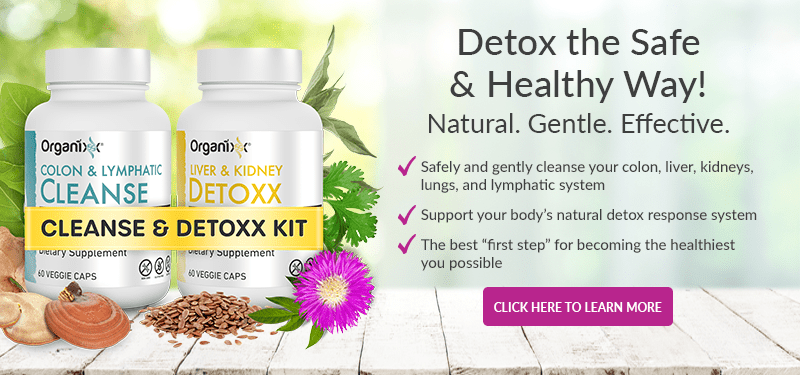
We can all likely agree that the past year has been at least somewhat (if not extremely) stressful. Prior to the Covid-19 pandemic, many of us seemed to struggle with how to slow down our busy lives. Now we all seem to be stressed to the max for a multitude of other reasons. No matter what the root cause, it can be difficult to calm down enough to enjoy a good night’s sleep when our nervous systems are revved up.
Fortunately, there are actions we can take to quiet our minds and relax our bodies. One of these practices is meditation, which calms the brain and nervous system significantly. Meditation combined with aromatherapy, however, can take your mindfulness practice to a whole new level.
If you haven’t tried aromatherapy or don’t know much about it, you might think it’s just a way to make a room smell better. But scientific research reveals it’s a good deal more than that… especially when it comes to helping us soothe an anxious mind and keeping our blood pressure under control.
The Research Into Calming Essential Oils

Several small clinical trials have been conducted on the action of essential oils and aromatherapy on mood, the nervous system, and the cardiovascular system.
For instance, a 2006 clinical study [1] included 52 people with hypertension (high blood pressure). Researchers looked at the effect of a lavender oil, ylang ylang, and bergamot essential oil blend on blood pressure, pulse, anxiety levels, and blood cortisol levels – the hormone released when a person is stressed.
The patients were randomly assigned to either inhale an essential oil blend, a placebo, or nothing. After four weeks of inhaling just once daily, the group receiving the calming essential oil blend fared much better than the other two groups.
Researchers found that the inhalation of these relaxing essential oils reduced psychological stress and blood cortisol levels, and reduced blood pressure in hypertensive patients.
Improved Quality of Life and Sleep
A 2017 clinical trial [2] sought to discover the effectiveness of essential oils on 132 busy working women. The women were randomly assigned to one of four groups who received either:

- distilled water
- lavender essential oil
- a blend of essential oils (equal parts lavender, clary sage, and oregano)
- acupressure massage
After four weeks, all the groups receiving either essential oils or acupressure reported an improvement in quality of life and sleep. Of these three groups, the one receiving the calming essential oil blend exhibited greater benefits in both quality of life and sleep quality compared with the other groups.
Decreased Anxiety & Better Sleep
Another clinical trial reported in 2017 [3] investigated the use of lavender essential oil for patients with coronary artery disease hospitalized in the intensive care unit. The patients were finding it difficult to sleep.
The patients who were given lavender essential oil inhalation for 15 days showed statistically significant improvements in sleep quality and anxiety levels than those not receiving the oil.
While the number of clinical studies has been small thus far, they have very clearly indicated that the use of calming essential oils and aromatherapy can have some very real and quantifiable benefits for those with:
- stress and anxiety
- high blood pressure
- trouble sleeping
4 Fabulous Relaxing Essential Oils
- Lavender (Lavandula angustifolia)
- Ylang Ylang (Cananga odorata)
- Clary Sage (Salvia sclarea)
- Bergamot (Citrus bergamia)
Research shows that certain calming essential oils such as lavender, ylang ylang, clary sage, and bergamot can:
- Calm stress and anxiety
- Improve quality and depth of sleep
- Lower blood pressure and heart rate
- Decrease levels of cortisol
- Act as natural anti-depressants
- Help to stabilize emotions
1. Lavender (Lavandula angustifolia)
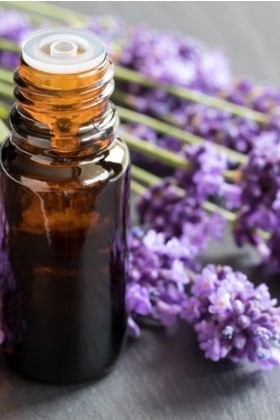
Cold-pressed from the flowers of the lavender plant, lavender essential oil is highly prized for its calming effects on the nervous system.
A 2009 study [4] found that lavender improved mood and reduced anxiety and depression.
A small 2019 clinical trial [5] found that breathing in lavender boosted blood melatonin levels in both older adult men and women. Melatonin is a hormone that has a role in regulating the sleep-wake cycle.
A small clinical study reported in 2020 [6] involving 52 diabetic patients suffering from insomnia found that inhaling lavender improved sleep quality and quantity, as well as the quality of life and mood in the patients using it.
2. Ylang Ylang (Cananga odorata)
Steam distilled from the flowers of the ylang ylang tree, also known as Perfume Tree, this calming essential oil has been revered by native people in the islands where the tree grows for promoting feelings of peace, well-being, and even as an aphrodisiac.
A small 2016 animal study [7] on ylang ylang found that it had significant anti-anxiety properties. Ylang ylang appeared to work by modulating certain neurotransmitters in the brain.
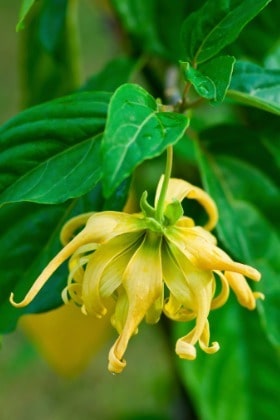
A 2018 animal study [8] investigating this effect of ylang ylang found that it did indeed have anxiolytic (anti-anxiety) activity. It worked by regulating the release of serotonin in the brain, which is a chemical messenger released by nerve cells. Serotonin plays a large role in regulating anxiety, reducing depression, and improving feelings of well-being.
A 2013 clinical study [9] with actual humans investigated the effects of ylang ylang on 29 healthy male volunteers. The volunteers were given either:
- ylang ylang, or
- nothing other than air to breathe over a period of one hour
Researchers found that after that hour, those breathing in the ylang ylang had decreased blood pressure and heart rate. Researchers noted that ylang ylang had the effectiveness of a sedative.
3. Clary Sage (Salvia sclarea)
Steam distilled from the flowers of this plant, it is thought to be so-named because in the Middle Ages clary sage was used as an eyewash. The name comes from the Latin word clarus which means “clear” (as in clear eyes). Clary sage has long been used by herbalists for its calming effects, management of female hormonal health, and many other health complaints.
With regard to the abilities of clary sage to modulate moods, a 2010 animal study [10] found that clary sage had anti-depressant action, and it worked by modulating the activity of dopamine, which is both a neurotransmitter and a hormone. Dopamine plays a role in how we move and affects our moods, memory, and motivation.
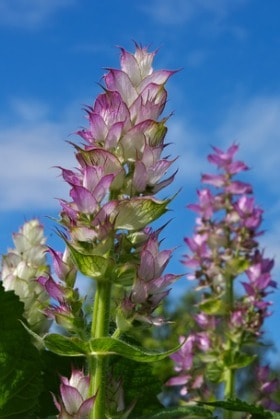
A clinical trial reported in 2013 [11] examined the effect of clary sage and lavender on the autonomic nervous system of 34 female patients with urinary incontinence. The patients were about to undergo a urodynamic test, which made them feel nervous and embarrassed (due to the need to urinate in front of a hospital tester).
Each of the women was given either clary sage oil, lavender oil, or almond oil to breathe in for an hour prior to the test. Researchers found that the women in the clary sage group experienced a significant decrease in systolic and diastolic blood pressure and a significant decrease in respiratory rate.
A 2014 clinical trial [12] investigated clary sage’s ability to reduce stress and depression in 22 post-menopausal women. They found that inhaling clary sage essential oil reduced cortisol levels by up to 36%. Clary sage inhalation also improved thyroid hormone levels and had an anti-depressant effect.
4. Bergamot (Citrus bergamia)
Thought to be a hybrid between a lemon or lime tree and bitter orange, bergamot oil is cold-pressed from the rind of the bitter-tasting fruit of this tree. Historically prized for its fragrance and used in perfumes (and Earl Gray tea), bergamot has attracted attention more recently for its natural mood-enhancing activity.
A 2015 animal study [13] on rats subjected to stress had some interesting findings. Researchers tested the effects of both bergamot essential oil and a pharmaceutical called fluoxitine (also known as Prozac) on the rats. It was discovered that the rats inhaling bergamot oil exhibited less depressive behavior and that this effect was similar to the rats receiving the Prozac.
In a small 2011 clinical study [14], researchers investigated the effects of a blend of bergamot and lavender on 40 healthy human volunteers. The volunteers applied the blend of oils to their abdomens daily. At the conclusion of the trial, researchers found that compared with the placebo group, the group receiving the essential oil blend had significantly decreased pulse rate and blood pressure. The volunteers also said that they felt calmer and more relaxed.

A clinical study reported in 2015 [15] involved 41 healthy female volunteers. The women were split into three groups. One group received rest only; one group received rest and water vapor to breathe; and one group received rest, water vapor, and bergamot oil to breathe. The researchers found that those receiving the rest, water vapor, and bergamot oil had significantly lower cortisol levels after just 10 minutes of use.
A 2015 review of research [16] investigated the effects of various essential oils on anxiety levels in animals. Among the oils tested, bergamot was found to have the most effective anti-anxiety activity.
In 2017, researchers examined the neurobiological effects of bergamot oil on rats [17]. They found that bergamot oil had significant anti-anxiety effects and induced relaxation in the animals.
4 Tips for Using Calming Essential Oils
Editor’s Note: Organixx used to carry an essential blend called Relaxx that was a blend of lavender, ylang yang, clary sage, and bergamot essential oils. If you have any Organixx Relaxx Essential Oil blend, these are some ways you can use it.
1. Inhalation Method.
Place a drop or two of your favorite calming essential oil(s)* into the palm of one hand, rub both palms together, and then place your hands over your nose and mouth, being careful to avoid your eyes. Fill your lungs with the aroma, holding the oil vapor in your lungs for a good 5-10 seconds (or as long as you can). This technique helps to get the essential oils into your lungs, and from there into your bloodstream very quickly. This is great to do prior to bedtime or anytime you feel anxious or stressed.
*use oils individually or try mixing two or more oils to make a blend.
2. Relaxation Bath.

Essential oils are not water-soluble, so dripping them directly into a bath will only result in a film of undiluted essential oils sitting on top of the water which could be irritating to very sensitive skin. What you need is a dispersant. Good ones to use are fractionated coconut oil, olive oil, or a liquid castile soap.
Mix 5-20 drops of essential oils per 1 tablespoon of your chosen dispersant. Make sure the bathwater isn’t too hot, but warm enough that you can relax and breathe in the aroma for a quiet, calming experience.
3. Deepening Meditation Practice.
Combining calming essential oils with meditation can be very powerful. Using a calming essential oil blend (see step #1) just prior to meditation can help to calm down your nervous system, bring about a state of peaceful awareness, lower your blood pressure, and ease anxiety. Just a few moments of deep breathing prior to meditation can add another dimension to your meditation practice.
4. Calming Agitated Kids.
You don’t need to put the oil on the kids… just wear it yourself like a perfume. Waft it around the room where older child(ren) are playing or fighting. Or use a cool-mist essential oil diffuser for 10-20 minutes in the family area.
Closing Notes of Caution
Avoid the use of essential oils on sensitive areas of the body (e.g., inside ears and around genitalia) and never near the eyes. If you wish to use essential oils with children or while pregnant or breastfeeding, you should ALWAYS exercise extreme caution and seek a qualified practitioner’s advice prior to use.
Remember too that essential oils are not intended to be used as replacements for medicine, but to support overall health and well-being. For any persistent health problems, always consult your physician.
The powerhouse trio of herbs in Magi-Complexx Essential Oil provides the strongest, most synergistic healing effect, helping sufferers of arthritis pain, constant muscle aches and pains, neuropathy, systemic inflammation, slowed wound healing, circulatory challenges, as well as skin irritations like eczema, psoriasis, and acne.
